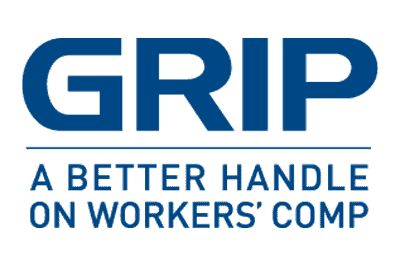Return to Work and COVID – FAQ
Is there anything specific to the COVID situation that we should keep in mind with RTW?
- With a valid, reasonably continuous job in place, workers who were furloughed due to COVID were paid unemployment rather than time-loss. This is beneficial to you as an employer because unemployment is less expensive than time-loss.
- With the above in mind, it’s unclear what will happen next. Unfortunately, we have already seen a second shutdown. If there are workers on time-loss who have not been offered valid, reasonably continuous work, we will want to explore getting that in place as soon as we can.
Are there any new RTW opportunities that COVID may provide?
- Employers have been very successful with sanitizing positions. Some companies are still able to get workers back to work with Door Greeting/Sanitizing positions—even if their lobbies are closed—to give delivery drivers access.
- Employers can utilize workers with restrictions to check temperatures.
- Employers can utilize workers with restrictions to update the COVID policies and make sure that mandates are being followed.
Are there any RTW challenges specific to COVID?
There are quite a few challenges with the biggest being that some employers are not open or are open with extremely limited capacity. This is going to be a tough time-period and what you want to do is prevent as much time-loss as possible so that these claims don’t affect the bottom line for longer than they should.
There will be some employees who don’t want to come back to work for fear of contracting the virus. If this is the case, the worker should not continue to get time-loss. When work is offered, the employee is free to make a choice to accept or decline. With either decision, the worker is then no longer eligible for time-loss payments.
GRIP Safety
Stay Safe: Ladders and Electiricty Don’t Mix
There is heartbreaking news within the group.
On Sunday there was an accident involving a painting company. Three crew members were painting a church. Two of the three crew members were moving an extension ladder on the exterior when it came in contact with overhead powerlines. One of the workers was killed on site the other is in critical condition fighting for his life. It’s grim instances like this that remind us to pay close attention when doing any overhead work outside. Download the CPSC Safety Alert, Ladders and Electricity Don’t Mix.
Preventing Struck-by Incidents
There has been a rise in struck-by accidents involving machinery and power tools this month, within the group. Struck-by injuries occur when forcible contact or impact takes place between a person and an object/tool such as nail gun or vehicle. Share this safety talk with your crews regarding struck-by accidents and stay safe
With all the moving equipment, flying debris, and falling objects on a construction site, it can be dangerous for an individual on the ground. As ground personnel on the job site, it is essential to understand each day’s specific hazards. Furthermore, everyone needs to work together to eliminate or mitigate the dangers that result in struck-by incidents.
Struck-by incidents are one of the most significant risks to ground personnel on any construction site. These incidents were responsible for 8.1% of all fatalities in the construction industry in 2014. There are many struck-by hazards on every construction site that can severely injure or kill workers on any given day. Common struck-by hazards include moving equipment, falling objects, and flying debris.
Safeguards to Prevent Struck-by Incidents
- Eliminate as many struck-by hazards due to equipment as possible. For example, does a piece of equipment or vehicle need to operate where there are pedestrians? Can unnecessary backing be eliminated? Can the worker on the ground wait to complete the task they were assigned to do or complete it somewhere else away from moving equipment?
- Eliminate the potential for falling objects. Remove materials or tools that are located on an elevated level when possible. If elimination is not possible, make sure proper toe boards are placed on any high surfaces to prevent objects from sliding off. Another option is to tie off tools and materials to ensure they do not fall to a lower level.
- Barricade work zones to prevent entry where equipment is operating or work overhead being completed. Substantial barricades such as fences will help prevent ground personnel from entering an area where they could be injured.
- Barricade or separate any work tasks that create flying debris. For example, workers should not be exposed to grinding operations or operations that create excessive dust, like cutting concrete, if they do not complete the task.
It is difficult to entirely eliminate the hazards resulting in struck-by incidents, but proper planning and work zone delineation can help eliminate exposure to these risks. Evaluate your work tasks to see if there are any unnecessary risks to ground personnel due to the mentioned hazards above. Get more information at SafetyTalkIdeas.com
Opening or Closing L&I Accounts
This year has brought many changes to the business landscape in our state. Companies are innovating, adapting or making the difficult choice to close in response to the economic pressures brought on by the pandemic. If you are adding locations, opening new businesses, or closing and/or selling your business, one of the steps you will need to take is setting up or settling your accounts with L&I.
Adding Locations or Opening a New Business
The first step is letting the state of Washington know by filing a Business License Application with the Department of Revenue. This allows the state to assign a Unified Business Identification (UBI) Number. Depending on what you designate on the application, it also signals to other agencies that accounts should be established. Here are a couple of common scenarios with the appropriate business license application process:
- You have a new location opening up with the same ownership as your existing locations. If you want the businesses to have the same UBI, complete the Business License Application and select the option to add a location to an existing UBI. If you will have employees (even if you are not hiring them now), indicate on the application that you will be hiring. This signals the Department of Revenue to inform L&I and Employment Security to set up workers compensation and unemployment accounts.
- You have a new business with different majority ownership than your current businesses. Complete the Business License Application without listing the existing UBI and indicate that you will be hiring employees. L&I will create a brand-new policy, separate from your existing accounts.
As L&I sets up your policy, you have the choice of combined or separate reporting for your locations.
- Combined reporting places all locations under the same exact account number, (for example 123,987-00). You pay premium for all locations under one account and all claims are assigned to this account number, regardless of the location.
- Separate reporting places all locations under the same 6-digit policy but each will have separate sub-accounts (123,987-00; 123,987-01, 123,987-02, etc.). Separate reporting requires that premium be paid each quarter under each sub-account and claims are assigned to the specific sub-account for each location. There are pros and cons to each approach, and we can help you decide which is best for your business.
Closing or Selling one Location or Your Entire Business
The Department of Revenue is also the place to go to start the process of notifying state agencies of your changes. Completing a Business Information Change Form signals to Department of Revenue to notify Business Licensing, Employment Security, L&I, and the Secretary of State’s office of the pending closure/sale. You should also notify your L&I account manager and ERNwest Group Manager. L&I will require you to complete and file your final Quarterly Report. Your ERNwest Group Manager will help ensure that your L&I accounts are closed and no claims or penalties for late premium are assigned to your business after the business has closed.
These are trying times and ERNwest is here to help your company navigate the workers’ compensation waters, from account set-up to safety programs to claims management and to account closure if necessary. Please let us know if there is anything we can do to help.
or
Helpful Winter Safety Information
Winter Walking
Winter weather is a well-known headache for commuters. But when people arrive at work, they must face yet another hazard—sidewalks and parking lots that may be icy or slick.
“In 2014, there were 42,480 workplace injuries and illnesses involving ice, sleet or snow that required at least one day away from work to recuperate,” according to data from the Bureau of Labor Statistics. These incidents were the result of falls, slips or trips; overexertion and bodily reaction; transportation incidents; or contact with objects and equipment. Get more information on winter weather slip, trip & fall prevention.
Winter Driving
Winter is here and with it comes skiing, sledding, and potentially dangerous driving conditions. Whether travelling mountain passes, the Palouse, or just the hills of Puget Sound, it’s a great time to remind ourselves of what we can do to be safe on the road. Here are a few tips to follow this winter:
- Make sure your car is prepared for winter.
- Do a pre-drive check of your vehicle before heading out.
- Check road conditions along your route.
- Review methods to avoid a crash in bad weather.
For more information on winter driving, you can go to the National Highway Traffic Safety Administration website.
Upcoming Training
GRIP Webinar Training
These GRIP-specific trainings benefit new members or serve as a great refresher for established GRIP participants. Click on the dates below for more information about the training and to register.
December 1, 10:30am | Getting your GRIP on Claims, Comp & Safety
December 1, 12:30pm | OSHA 300 Recordkeeping
ERNwest Webinar Training
Select the dates below for more information about ERNwest-specific trainings and to register.
December 1 | 10:00am | Understanding Industrial Insurance Rates
December 3 | 2:00pm | What is Retro*
December 15 | 10:00am | OSHA Recordkeeping – Nuts & Bolts
December 17 | 10:00am | OSHA 300 Recordkeeping Electronic Reporting
December 22 | 10:00am | Using Kept on Salary and Modified Duty Effectively
View a list of all ERNwest training
Latest COVID-19 Updates
Additional RETRO Resources
GRIP Safety Resources
Access Toolbox Tips and general safety resources. Learn more.
Report All Incidents
Remember to report all incidents on the ERNwest website so that your claims manager is aware and can help guide you through the process. | ERNwest.com/report-an-incident
Contact
For precautionary reasons related to COVID-19, MBAKS offices are closed until King County enters Phase 3. Staff is working remotely and can be reached via phone or email. Events and class cancellations are noted on the MBAKS Events Calendar. Refer to the MBAKS COVID-19/Updates for up-to-date information.
GRIP Retro Questions?
Ashlee Day, GRIP Group Manager, (253) 237-0809 | ADay@ernwest.com
GRIP Safety Questions?
John Sevier, GRIP Safety Manager | (253) 300-6399 | JSevier@ernwest.com
GRIP Stay-At-Work Questions?
Tom Nelson, GRIP Stay-At-Work Coordinator | (253) 372-2357 | TNelson@ERNwest.com


